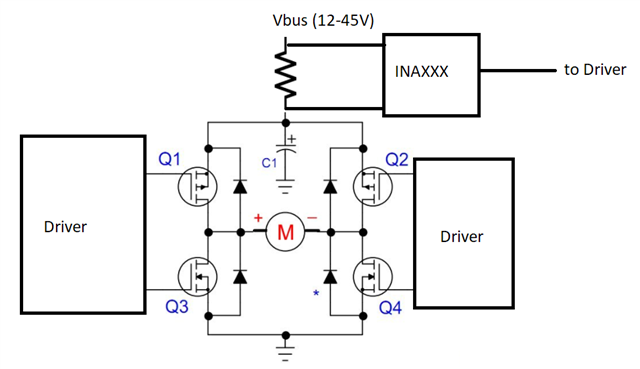Other Parts Discussed in Thread: INA240
Hi,
I'm redesigning an old project where there is a DC Motor (200W) and H-bridge composed by 4 mosfet IRFS3206 (ID max ~120A / 210A).
On the Vbus (24V-45V) there are 4 big capacitor (10mF).
If I have a short circuit on the motor, I have a very big current on the bridge (>300A).. so my idea is to measure the current flowing in the bridge and if this exceeds 50A open the high-side mosfet so prevent the damage to mosfets.
you have a good portfolio, I did some research, probably INA281 is suitable for this application, .
I'll be using a high-side configuration (I was undecided whether to put it in series with the motor). if I put the limit to 50A or 60A, I think I have enough time to be able to act on the mosfet gates before the short comes.
If I use 2mOhm and gain 20V/V, on the output I have 2.4V (60A) with 2.5V/us I think I'm under the 500us ( or 4V for 100A).
The trick will not be only opening the high side mosfets, but also keeping the low side mosfet closed in order to avoid currents due to inductive effects.

